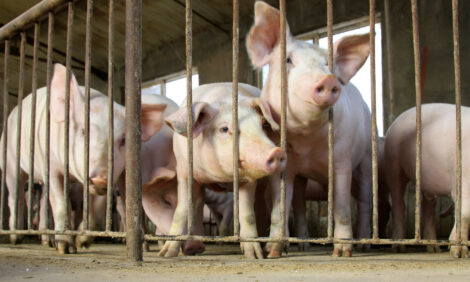



CME: June US Pork Imports Down
US - The US Department of Agriculture’s Economic Research Service published June trade numbers this week, on a carcass weight basis.These numbers are calculated using data from the US Department of Commerce, Bureau of the Census, Foreign Trade Division.
June beef import tonnage was up slightly from May, and on trend with the seasonally normal movements. For the first six months of 2016, beef imports were down 13 per cent compared to 2015’s. The majority of this decrease stemmed from less Australian product coming into the US.
Beef exports saw another generally positive month. June tonnage was about even with year ago levels, but that was also coming off of a relatively large year-over-year increase in May.
Through the first half of 2016, beef exports were 2 per cent higher than 2015’s. Within our major export destinations, for the January to June timeframe, exports were up 9 per cent to Japan, up 6 per cent to Mexico, up 17 per cent to South Korea, and down 6 per cent to Canada, year-over-year.
Japan is by far the highest volume international market for US beef.
On the pork side, imports were down year-over-year for the month of June, but for the first six months of the year were up 2 per cent compared to 2015’s.
Pork exports for the month were almost 5 per cent above year ago levels and for the first half of the year, exports were 2 per cent above 2015’s.
Looking at January to June exports to our main customers abroad, tonnage decreased 4 per cent to Japan, decreased 6 per cent to Mexico, and increased 2 per cent to Canada, compared to 2015’s.
Exports to mainland China and to Hong Kong have both seen significant gains year-over-year. For the first six months, exports to mainland China were up over 160 per cent and were up 70 per cent to Hong Kong.
This has been influenced by China’s decreased pork production this year, but as they build their hog inventory back up we may see export volume movement to them moderate. However, lower hog and pork prices in the US may stimulate some export demand as well.
Broiler export volume had another disappointing month and was down 10 per cent year-over-year for June. This put total exports for the first half of 2016 down 5 per cent compared to 2015’s.
Although exports are generally down across the board to our main trading partners, volumes have declined most significantly to Angola, Canada, Hong Kong, and the Former Soviet Union countries (excluding Russia).
We had expected to see year-over-year increases in broiler exports starting in June, as 12 months earlier, we saw those exports significantly fall off compared to year ago levels which was caused by HPAI trade bans imposed by other countries.
In terms of live animal trade, feeder cattle imports from Mexico were rather small in May and June, compared to historical levels. For the first half of 2016, feeder cattle imports from Mexico were 16 per cent below 2015’s (down 98,000 head). This could indicate herd rebuilding in Mexico and definitely reflects our lower domestic prices.
Cattle imports from Canada were down 10 per cent (down 50,000 head) from January to June, compared to 2015. We import both feeder cattle and slaughter cattle from Canada, and the year-over-year decrease is fully attributed to fewer feeder cattle imports in the 440-700 pound category.
For the first half of the year we have actually imported 4 per cent more feeder cattle over 700 pounds and 20 per cent more slaughter cattle, compared to 2015.
Live hog imports from Canada are above year ago levels for the January to June time frame, up 1 per cent (up 30,000 head). Within that timeframe, slaughter hog imports were down 13 per cent (down 75,000 head) but feeder pig imports were up 5 per cent (up almost 105,000 head).







